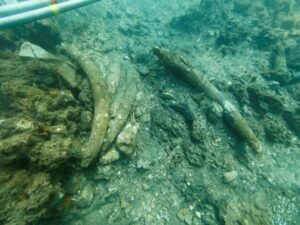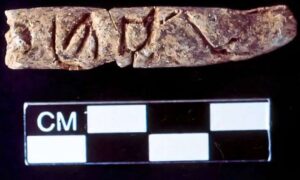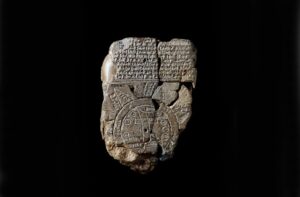Archaeologists discovered a new language this week. It was written on cuneiform clay tablets at a UNESCO site in Turkey that was once the capital of the Hittite Empire. This was one of Western Asia’s great powers during the Late Bronze Age.
Excavations have gone on at the site for a hundred years. Over the last four decades, researchers have unearthed 30,000 clay tablets. Most of them are in Hittite, the oldest known Indo-European language. A number of them show other languages, including Luwain, Palaic, and Hattic. As researchers poured over the tablets, they realized some displayed a totally new language.

An aerial view of Hattusha, the Hittite capital. Photo: UNESCO
No one knows what the words on the tablets mean, but they are clearly not in a known vernacular. They may be part of a ritual. Researcher Daniel Schwemer admits that he is not overly surprised by the discovery. The Hittites had “a particular interest in recording rituals in foreign languages,” he commented in a press release.
The Hittite king’s scribes would have written the texts. The Hittites controlled vast regions, from Anatolia to the northern Levant to northern Syria.
Another researcher involved in the excavations believes that this culture’s interest in other rituals and religions served a purpose. As their empire expanded, it engulfed communities with different religions and unfamiliar gods. The tablets detail thousands of different deities. By embracing other religions, the empire may have gained the respect of its new subjects.

Photo: UNESCO
Master chroniclers
The Hittites were master record keepers. Other tablets contained treaties, decrees, prayers, myths, and incantation rituals, alongside records of their battles and laws. They were one of the most formidable military powers of the time, regularly clashing with the Egyptians for dominance. They eventually entered into the world’s first peace treaty.
The empire was born around the time of the invention of the alphabet. Their meticulous chronicling is a rich trove of information about life during this period.
Researchers have named the language Kalašma because it seems to have been used by the people from that place. An introduction, in Hittite, on one of the tablets roughly translates as, “From now on, read in the language of the country of Kalašma.”
Kalašma was an area on the northwestern edge of Hittite. Its people fought with the Hittites against the Egyptians. What is surprising is that the language shares the most similarities with Luwain dialects, although geographically Kalašma was far closer to Palaic.

Intricate carvings at the site. Photo: UNESCO
The team hopes to publish more findings next year as they frantically try to decipher the tablets.






